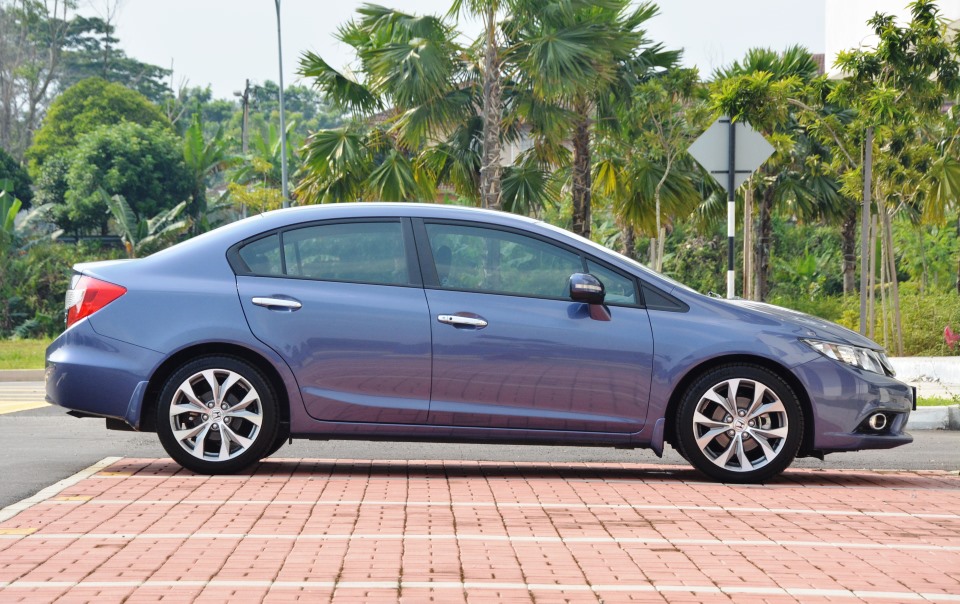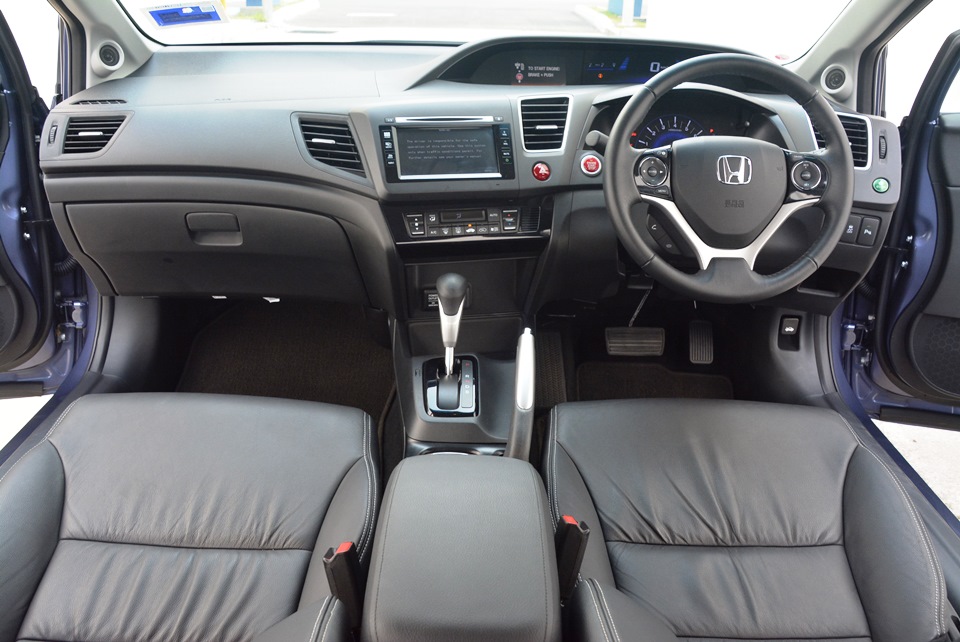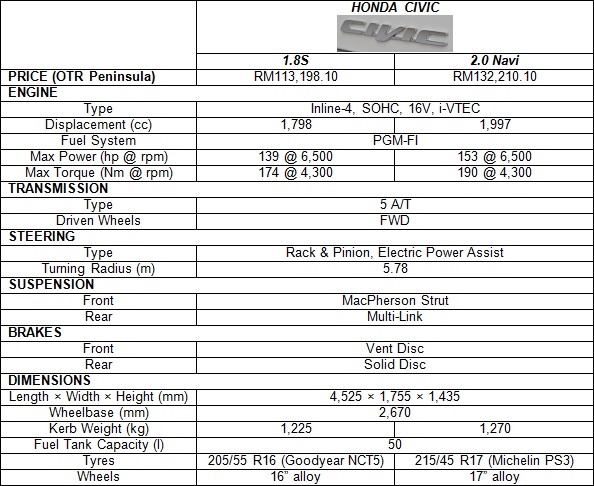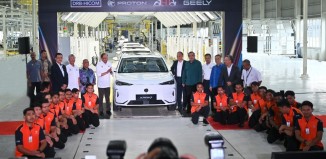Honda Civic FB facelift review
Once the defining car of the C-segment, the Honda Civic’s powers have faded considerably over the last three years. Many critics have lamented that the current Civic FB to be an inadequate replacement of the excellent FD as it failed to replicate the quantum leap improvement managed by its predecessor. For the most part, the FB seemed like the effort of a company that was content on sitting on its laurels afforded by years of domination.
There are still many buyers who would swear by a Honda Civic, but the growing abundance of options in the segment mean that it’s no longer the default choice of buyers shopping on a RM130k budget. The recent introduction of a facelifted model should serve to improve the Civic’s prospects, but is it enough to restore it to the segment’s pointed end?
Prices & Variants
Recent Honda models have been hitting their rivals hard on the value equation, offering a good blend of keen pricing with competitive equipment. The Civic continues that ideal, with all variants receiving price cuts over the predecessor models whilst receiving extra equipment.
At a smidgen over RM113k with all on-road costs factored in, the 1.8-litre base model headlines the Civic’s value for money preposition. It comes respectably furnished with electronic stability control, auto headlights, as well as tilt & telescopic steering listed in the equipment manifest. Notably, despite a reduction in price of over RM2k from its predecessor, keyless entry and cruise control trickles down from the 2.0-litre model.
The 2.0-litre model is a RM12k upgrade over the 1.8; besides a bigger engine, additional equipment native to this RM125k model includes electric driver seat adjustment, leather upholstery, HID headlamps, and paddle shifters. From the predecessor model, it shades over RM7k off its price tag yet gains side and curtain airbags.
A further RM7k on the 2.0 adds a factory-fitted 7-inch touchscreen with satellite navigation, HDMI port, Bluetooth handsfree, and reverse camera. The reverse camera is particularly essential, as the Civic’s high boot is a major hindrance to rear visibility. That this feature is not available even as a cost option in the 1.8 is regrettable for shoppers of the base model.
For the purposes of this review, we drove two units of the Civic representing the extreme ends of its model spectrum – the base 1.8 and the range-topping 2.0 Navi models.
Specifications
Honda came in under plenty of criticism when the pre-facelift Civic FB was launched to an underwhelming reception. Common consensus is that whilst it was a relatively competitive vehicle, it failed to move the game on far enough from its FD predecessor model, regressing in some areas even. This facelift is pretty much an exercise of smoothening the rough edges and refining the existing product before an all new model, reportedly in an advanced stage of development, rolls in.
Unsurprisingly, mechanical elements are unchanged; both the 1.8- and 2.0-litre R-series single cam i-VTEC engines keep their place in the engine room driving the front wheels via Honda’s tried-and-tested in-house 5-speed automatic transmission. Claimed outputs stay the same, reading 139hp/174Nm for the 1.8 and 153hp/190Nm for the 2.0.
No changes were made to the chassis either, but this is not to be scoffed at. Whilst all-round disc brakes and electric power steering have become norms of the segment, independent rear suspension is not; compared to many rivals that use torsion beams at the rear, the Civic still has a valid boast of having a more sophisticated suspension than most in its segment.
Exterior
External changes of this facelift exercise are kept to a minimum, with only subtlest alterations made to the front fascia. Between the headlights, horizontal slats of the front grille makes way for a honeycomb mesh with lower chrome surround. Further down, another strip of chrome is added to the lower grille. These are minor changes in isolation, but they do just enough to inform even casual observers that they are looking at an improved model.
As before, clear yet subtle differentiation cues separate the 2.0-litre models from the 1.8. Besides the brighter glow of HID headlamps on the bigger-engined model, the 2.0 also gets bigger 17-inch rims with superior Michelin PS3 tyres and side mirror-mounted indicators.
Lastly, a new shade of paint, Twilight Blue, as seen in our 2.0-litre test car (WB 1173 E) has been added to the colour palette and it serves as the vehicle’s signature colour in official promotional materials.
Interior
Inside, the signature cabin architecture passed down from the Civic FD continues to underpin the facelifted FB’s layout. If Honda made any physical alterations, they certainly escaped our attention.
Like most Honda cabins, the Civic’s interior excels in overall ease-of-use with all controls laid out in intuitively and comfortably within reach. Cabin volume is excellent by class standards and small item storages, in typical Honda fashion, are generous and very well distributed. In terms of overall usability and practicality, this cabin is a class-leader.
Our sole ergonomic gripe concerns rear visibility, which is hindered by the FB’s high boot; it is an issue inherited from the pre-facelift model and one which Honda should have compensated for by fitting reverse camera as standard rather than exclusive to the Navi variant. Rear air-con vents is another item which would conceivably improve the cabin from a functional standpoint.
Driving Experience
Dynamic competence was hardly an Achilles heel of the Civic FB even with the original model; the facelifted one keeps up the good work, successfully balancing a comfortably pliant ride with satisfactory handling. The 2.0-litre model has an advantage around bends thanks to its grippier Michelin PS3 tyres, but in the area of ride comfort, both models are well-matched. The electric-assisted rack steers quickly enough, but is found wanting in feedback.
Being powertrains that are two model generations old, both the 1.8- and 2.0-litre Civics offer performances that could once be considered class-leading, but are now acceptable at best. Typical of Honda engines, both rev smoothly enough, but without quite the same zest as the K-series twin cam mills. Particularly feeling its age is the 5-speed automatic transmission which, whilst smooth in its transitions, do not have the kind of lightning responses which we have grown accustomed to in newer gearboxes.
Little separates the two engines in the context of the urban commute and moderate highway cruising, so the choice between one or the other should be motivated largely due to budgetary concerns or preference in equipment. From a purely performance standpoint, the 1.8 has enough to satisfy most needs.
On the less tangibles, there is a noticeable improvement in refinement of the facelifted FB over the pre-facelift model. Noise levels in both the 1.8- and 2.0-litre models, for one, are lower than we recall of their immediate predecessors. Overall, the cars simply feel better screwed together than before.
Verdict
It is safe to say that the current Civic FB, whilst still a largely competitive vehicle, had lost some of the predecessor’s edge. Coinciding with Toyota’s introduction of an impressive all-new Corolla Altis accompanied by a host of new arrivals in the segment, the Civic saw its once iron-clad grip on the C-segment slip somewhat after the FB’s arrival in 2012.
Honda’s facelift of the FB successfully smoothens some of the original model’s rough edges, and the package is further sharpened by a commendable two-pronged improvement of its value preposition – reduced pricing and increased kit count. Against most rivals, it remains a compelling and convincing argument even it is no longer the segment benchmark that the FD used to be. If you put your money down on one, we’d be hard pressed to find a valid reason to object.
Gallery: Honda Civic 1.8
Honda Civic 2.0























































































